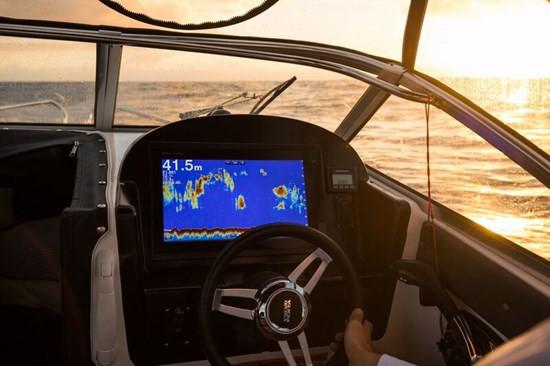
Fish finders are fast becoming a must-have boat accessory. When they were first introduced they were extremely expensive, but as happens with all technologies, prices have since come down to earth. Nowadays every boat can (and should) have one on board.
Yet to a novice, trying to interpret the images on the screen is like trying to read a foreign language. Knowing what all those colourful blobs mean requires understanding the basics of how the technology works.
How do fish finders work?

Sonar is the principal technology on which fish finders work. A transducer mounted to the boat shoots out a cone of sound into the water. When this soundwave hits something solid (the lakebed or a school of fish, for instance), it reflects back to the transducer, which then displays the results on an LCD screen. The return strength of the signal speaks to the density and hardness of the object - things like rocks ping back stronger signals than a comparatively soft fish. Some models like the Garmin echoMAP 75SV have built in GPS and Chartplotter functionality too.
How do you interpret the screen?
With that basic outline of the technology, understanding how the images on the screen are generated becomes a little easier.
The vertical dimension of the screen corresponds to depth and the horizontal dimension to time - the top right corner representing what's directly under your boat in the present moment. Depending on the scale, this could mean for example that something in the middle of the screen was 20 ft under your boat 2 seconds ago, while something in the bottom left corner was 40 ft under your boat 4 seconds ago.
Specific colours represent specific return strengths. In the Humminbird model pictured (and the video below) red represents something hard. The thick lines on the bottom of both represent the floors of the bodies of water they're on. Where are the fish, you ask? On the Humminbird model pictured, they would be the blobs of colour you can see between the surface and the floor. Keep in mind that not everything you see will necessarily be fish - anything that's floating in the water is capable of bouncing a signal back to the transducer. With time, however, you'll get better at spotting what's likely to be a school of fish and what's probably just an old boot.
If you're in the market for a fish finder, take a gander at the offerings in our online store. With products from trusted brands like Furuno, Garmin, Lowrance and Humminbird, you're sure to find something that'll fit your budget and needs.




